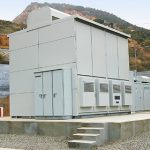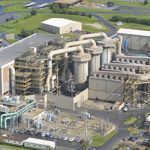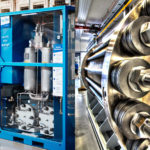PHEVs and EVs; Plugging Into a Lump of Coal
John Petersen Since I've stirred up a hornet's nest over the last two weeks first by debunking the mythology that PHEVs and EVs will save their owners money and then by showing how PHEVs and EVs will sabotage America's drive for energy independence, I figured I might as well go for the triple-crown of harsh realities by showing readers that in the U.S., where 70% of electricity comes from burning hydrocarbons, PHEVs and EVs won't make a dent in CO2 emissions. They'll just take distributed CO2 emissions off the roads and centralize them in coal and gas...
Lesser Known Battery Chemistries
by Debra Fiakas, CFA
The last post Vanadium Flow Battery Companies, featured several companies bringing vanadium redox flow batteries to the market for large-scale energy storage projects. These highly efficient and long-lived batteries take advantage of the unique properties of vanadium. There are other interesting chemical mixes on the battery market that could yield returns for investors.
Sodium-sulfur
There are at least eight different installations of sodium-sulfur or NaS batteries around the world. One of the largest is the Yerba Buena Energy Storage System owned by Pacific Gas & Electric Company (PCG: NYSE) in California. Rated at 4 megawatts or 24 megawatt hours, the system can provide backup electricity...
Last Battery Developer Standing
by Debra Fiakas CFA Advanced battery producer A123 Systems, Inc. (AONE: Nasdaq) has flamed out, with the cinders of its lithium ion technologies snapped up by Johnson Controls, Inc. (JCI: NYSE). Much has been written in the financial press over the past few weeks about the fate of A123 and the next step by Johnson Controls. What is more, because A123 had received government loan assistance, the political pundits have taken advantage of the company’s embarrassment to make their case for or against government in general and public alternative energy investment in particular. What really has me...
Earnings Roundup: Metals Prices Boost Covanta and Umicore
By Tom Konrad, Ph.D., CFA
You don’t have to own mining companies to benefit from rising metals prices.
This is a roundup of first quarter earnings notes shared with my Patreon supporters over the last week. Waste to energy operator Covanta and specialty metals recycler Umicore are both benefiting from skyrocketing metals prices.
Just as renewable energy and energy efficiency stocks have long shown that investors don’t have to own fossil fuel companies to benefit from rising prices of fossil fuels, recyclers like Covanta and Umicore are showing that you don’t have to own environmentally damaging mining companies to benefit from rising...
Hydrogenics Corp: Splitting Water
by Debra Fiakas, CFA Most investors, if they have heard of Hydrogenics Corporation (HYGS: Nasdaq) at all, consider them a fuel cell producer. However, about two-thirds of the company’s revenue comes from the design and manufacture of hydrogen generation products based on water electrolysis technology - a somewhat unique, but valuable electrochemical technology that could make important contributions to the world’s future energy base. Electrolysis or the splitting of water molecules using an electric current produces hydrogen and oxygen - two elements that have market potential in a variety of industrial and power markets. It stands in...
Take A Bromide For Flow Battery Frustration
by Debra Fiakas CFA The most recent article Vanadium Flow Battery Stocks: Barely A Dribble may have disappointed some investors who were expecting more opportunity for a stake in building energy storage. Large scale energy storage is an idea to which many in the utility industry speak, but few power producers have made significant investments beyond lithium ion batteries. Flow batteries have long been touted as a cost-effective and technically superior alternative for wind or solar power storage or for load-balancing efforts on the electric grid, as examples. In the last post we looked at the flow battery...
Grid-Based Energy Storage; Notes, Questions and Heresies from Storage Week
John Petersen Last week I had the pleasure of participating as a panelist in Infocast’s Storage Week and attending four days of presentations by industry executives, national thought leaders and policymakers. While most of the presentations were too detailed and specific for a blog about energy storage stocks, there were a few high-level discussions that may be interesting to readers and while I'll never qualify as a journalist I can at least share some of the thoughts I jotted down. Storage for Integration of Renewables Two of the most important presentations came from Dr....
Electric Vehicles; Ineptitude, apathy … and piles of taxpayer money
John Petersen The last few weeks have been a media and political circus in the US as a pair of high-profile Department of Energy loan guarantees wound up in bankruptcy court. In the first case, solar power innovator Solyndra filed two years after closing a $535 million loan for a factory that never quite made it into production. In the second case, flywheel storage innovator Beacon Power (BCONQ.PK) filed about a year after scoring a $43 million loan for a 20 MW frequency regulation plant that was commissioned in June. Both are black eyes for the Obama administration’s...
How Aggregation Will Destroy Niche Markets for Smart Grid Energy Storage
John Petersen Last week I introduced a new study titled "Energy Storage for the Electricity Grid: Benefits and Potential Market Assessment" that was commissioned by the DOE's Energy Storage Systems Program, identified seventeen discrete storage applications for the electricity grid, discussed the technical requirements of each application and summarized the potential economic benefits. If the Yahoo! message boards are any indication, investors are already jumping to inaccurate and wildly optimistic conclusions because they don't understand that many storage applications are synergistic and every storage system purchaser will try to maximize the value of its investment by capturing...
Alkaline Electrolyzers – The Future needs a Metamorphosis
by Ishaan Goel
The second article in this series on water electrolyzers focused on polymer electrolyte membrane electrolyzers (PEMEs). PEMEs have increasingly captured the interest of industry over recent years, due to favorable technical characteristics. Despite this, the global electrolyzer market today is dominated by a much older model - alkaline electrolyzers (ALKEs). (For details of how both electrolyzers work, refer to the first article in the series).
The graph above shows the investment costs ($/kW) of ALKEs and PEMEs as the technology has advanced over time. In other words, they show the initial capital cost for every 1 kW of...
Valuation Primer For Energy Storage Companies – Lesson #2
John Petersen On November 6th I published Lesson #1 in this series, which provided a quick side-by-side comparison of Ener1 (HEV) and Exide Technologies (XIDE). Yesterday two more companies that I track, A123 Systems (AONE) and Enersys (ENS), reported results for the September quarter. The quick summary is that Enersys handily beat street estimates while the bleeding at A123 continued unabated. To follow up with the format I introduced last week, the first graph is a simple market performance comparison of the two companies over the last year. The second graph comes from my...
Why Lithium-ion Batteries are Like Hippos in Pink Tutus
John Petersen In recent years lithium-ion batteries have been portrayed as glamorous, sleek, sexy and hot – the stuff of adolescent fantasy and mid-life crisis. Reality is more like a surreal remake of the Dance of the Hours sequence in the Disney classic Fantasia where hippos in pink tutus gossip about overweight dancing elephants. Let's face it folks, there are no cheetahs in the battery ballet. While lithium-ion battery packs are smaller and lighter than their lead-acid counterparts, both types of batteries are ridiculously heavy substitutes for a fuel tank. The sad part is that whispers from hippos...
Should We Worry About Beacon’s Flywheels?
Tom Konrad CFA How material is the failure of one of Beacon Power's (BCON) flywheels on July 27?<a href="http://www.altenergystocks.com/comm/content/beacon-power-corporation/" beacon="" power's="" (bcon) Last week, I published an article Four Clean Energy Value Stocks I'm Buying Now, including Beacon Power as one of the four. My rationale for including Beacon was: Beacon has been operating their first commercial scale 20MW flywheel energy storage plant since early this year without mishap, achieving full capacity in June. They are set to begin construction of their second 20MW plant later this year, 54% of...
A123′s Deal With China’s Wanxiang Would Value the Stock at $0.55 a Share
Tom Konrad CFA A123 Systems battery cell products (Source: A123) It was no secret that A123 Systems (NASD:AONE) was desperate for money. It’s also no secret that Chinese companies are interested in buying Western companies, especially when they can acquire useful technology in the deal. So this morning’s announcement that Wanxiang Group Corporation, a Chinese largest autoparts manufacturer which has significant US operations, had signed a non-binding memorandum of understanding to invest up to $450 million in A123 through a combination of bridge loans, convertible notes, and warrants seems...
Maxwell’s 54% Q2 Growth: An Outlier, Not A Trend
Tom Konrad CFA When I wrote about Maxwell Technologies’(NASD:MXWL) earnings restatement earlier this month, I predicted that third quarter (Q3) earnings would be much worse than recent trends were leading investors to believe. I expected the stock would decline as analysts revised their expectations to reflect Maxwell’s weak short term prospects, allowing me to exit my short position, which I still hold. Sure enough, analysts have reduced their earnings expectations. Analyst consensus earnings expectations for Q3 have reversed from 13 cents to a 10 cent loss, while expectations for 2013 have plunged from 46 cents to 6 cents....
NanoMarkets LLC Forecasts $8.3 Billion Annual Market For Smart Grid Batteries By 2016
In August of last year I wrote an article titled "Grid-based Energy Storage: Birth of a Giant." Over the last 12 months I've written a series of follow-on articles that discuss the principal classes of manufactured energy storage devices and the companies that are making or planning to make products for smart grid energy storage applications. My entire archive of articles on the energy storage sector is available here. One of the biggest problems I've encountered over the last year has been a dearth of reliable third party information that can help investors understand the breadth and...





